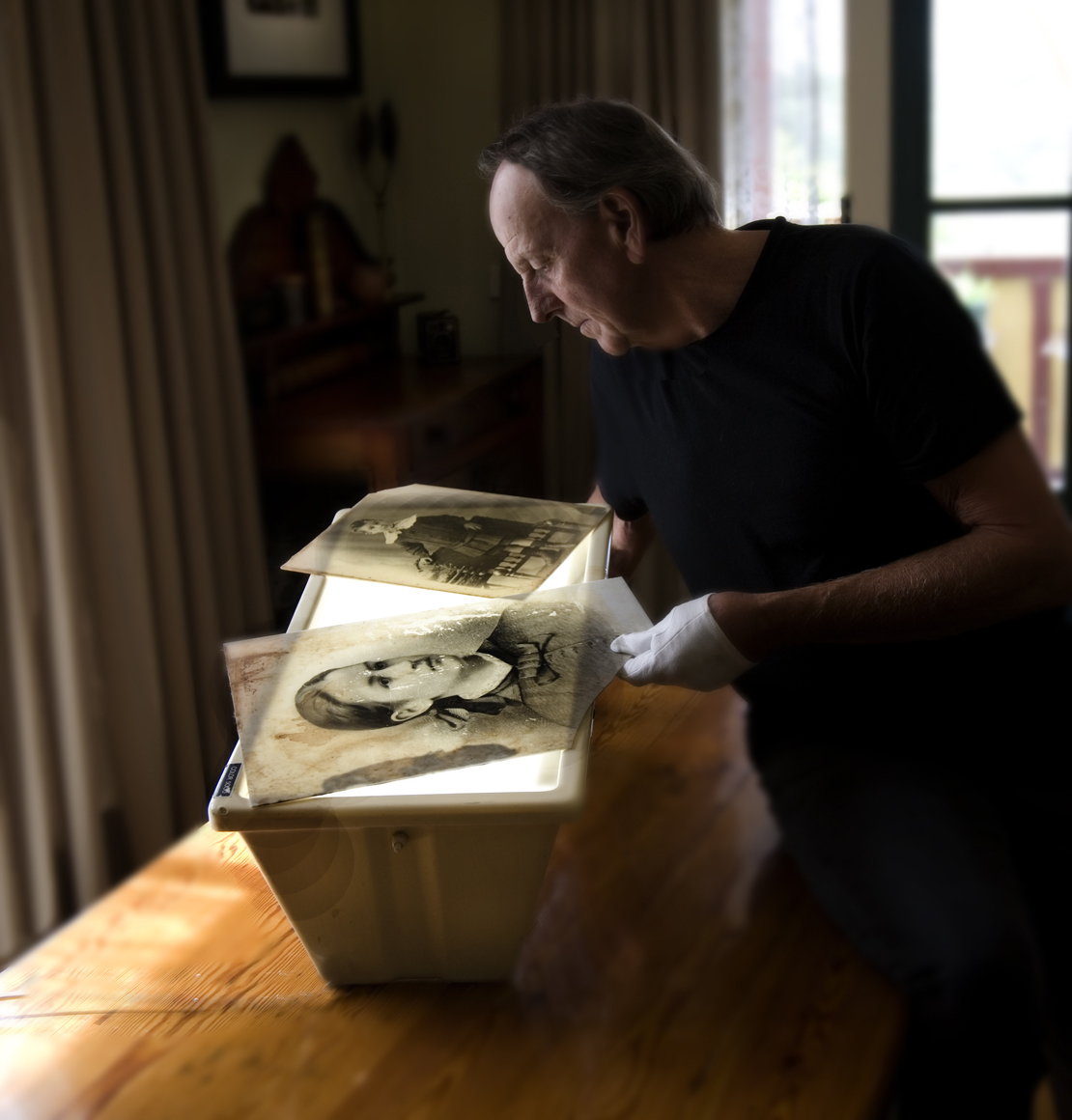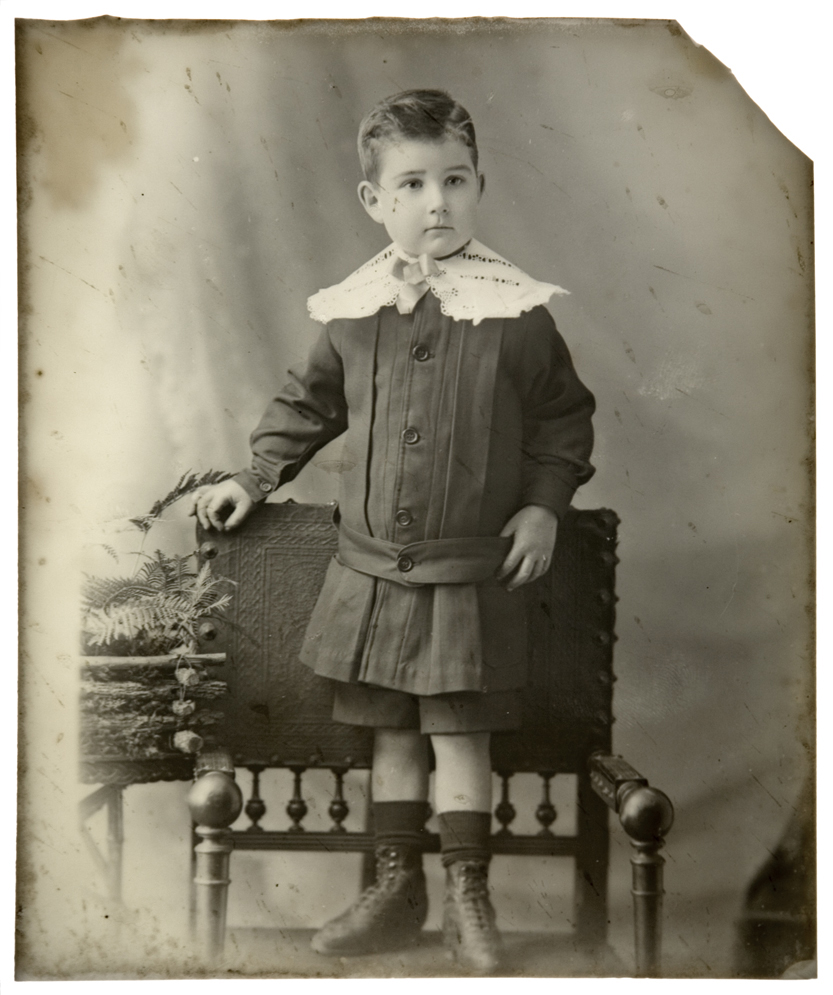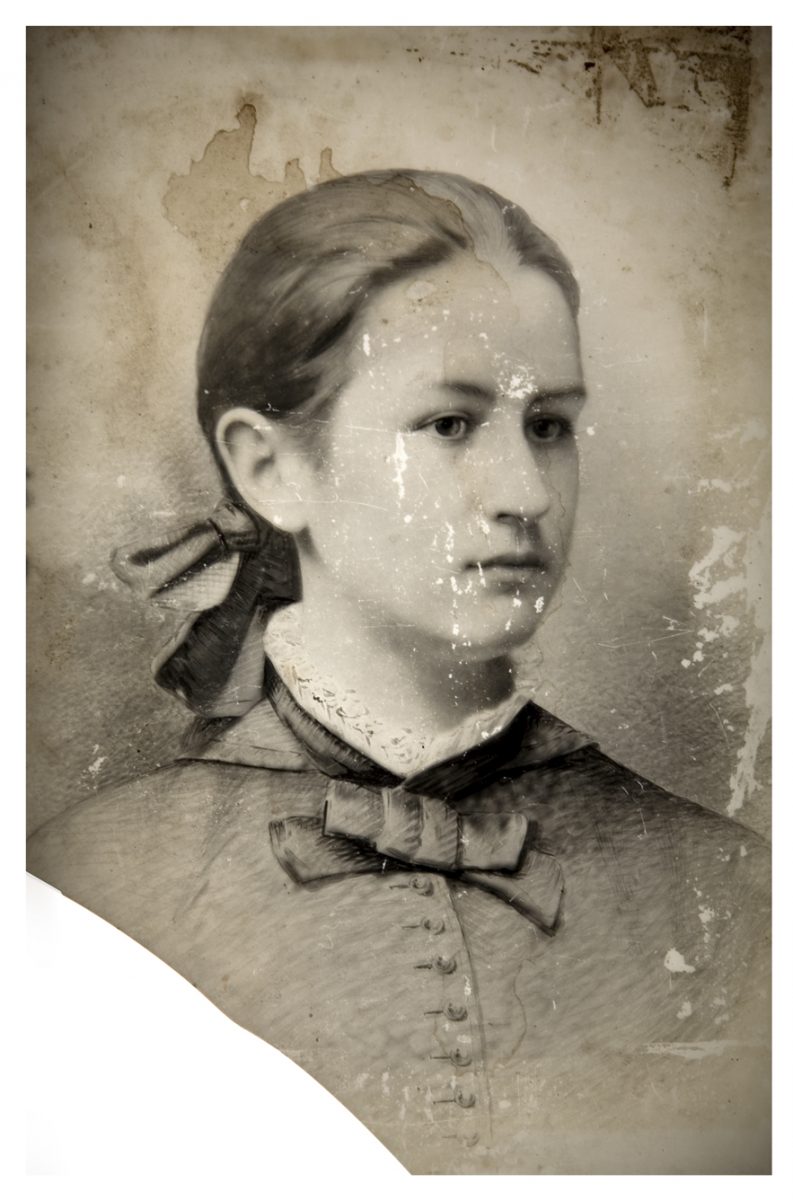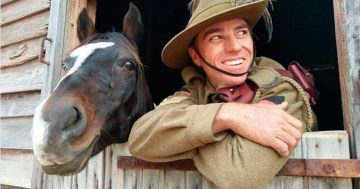
Jerrawa photographer Ray McJannett takes a close look through a light box of the two “milk glass” portraits he found at the Gunning tip. He hopes they can be reunited with descendants of the family. Photograph: Rae O’Brien.
There are coincidences, there’s fate – and then there’s the good old country rubbish tip.
Like many artistic souls, photographer Ray McJannett knows the value of country tips. Perfect for folk who live out of town to take the bits they no longer need to and just as good for those recyclists who are looking for that particular piece to finish a project – like the bespoke bird houses he creates or even that special piece of timber, window frame or old piece of “something” perfect to finish off a house.
Visiting the Gunning tip recently, Ray, who lives on a 20-hectare property at nearby Jerrawa, saw two old glass portraits leaning against a “glass only” wheelie bin.
Taking a closer look, he could see they were rare “milk glass” portraits, dating back to what he believes was the Victorian era – one of a young woman and the other of a boy.
“Such milk glass images are extremely rare and to find two at a tip is rarer still,” he said.
Also known as opalotype, he said, the two fragile portraits, despite a little bit of damage on each, “are a beautiful example of early 19th century studio photography where the studio offered more than just a paper print”.
(Opalotype is an early photographic technique where they were printed on sheets of opaque, translucent white glass, and were sometimes hand-tinted with colour to enhance their effect.)
“It would be fascinating to find out who these people were and what they made of their lives.”

Does this young man look familiar? The “milk glass” image of this boy was found with an image of an older woman, both at the Gunning tip. Photo: Ray McJannett.
Ray believes some degree of fate must be involved in his discovery of the images, placed as they were against a wheelie bin and not just dumped in the rubbish and destined to never surface again – let alone find out where they belong.
Along with his partner Rae O’Brien, Ray has uncovered many treasures at the tip, but something about these photographs makes him want to unwrap their story completely.
Ray said he knows that the likelihood of close descendants of the woman and boy still living in the district is slim, considering the images are well over 100 years old, but he reckons it’s worth a shot to put the word out there – does anyone know who these two are?
He also believes there’s an element of fate in that he was the one to find the photographs. It was as if someone had rummaged through the tip, found these two pieces, and left them out so Ray, a former photographer with the Australian War Memorial in Canberra for 20 years, would find them and know what to do with them.
But all Ray is sure about, he admits, is that he couldn’t possibly throw them away.
“When I found them they were pretty knocked about,” he said. “They had a lot of dirt on them, the corners were cracked, it really was amazing that they’d lasted so long.
“I guess as a photographer, it was a coincidence that I was the one to find them, sort of ironic, really.
“I don’t usually go to the tip on that day which was a Wednesday, so maybe it was meant to be.”
Ray said he had no plans to do any work on the images, like restore or even clean them. “I prefer to conserve things like this, not restore them.
“It would be great if someone saw this and we could find the descendants of the owner, but if we don’t, I’ll just put them away somewhere safe.

Do you recognise this young woman? This image was found at the Gunning tip and its finder, Ray McJannett, would like it to be reunited with her family. Photo: Ray McJannett.
As a professional photographer, Ray knows how to care for such old treasures and ensure they don’t deteriorate any further. “The best thing would be to keep them in a cool, dark place and try not to touch them too often, just avoid getting fingerprints on them.
“I would love to hand them back to someone with connections to their family, or to a historical society if they were interested. It would just be wonderful to try to find out who these people were and where they came from.
“When you find special things like this, there are often more questions than answers.”
Ray said the rare find reinforced the worth of installing Revolve-type recycling depots in country tips to avoid unnecessary waste and decrease landfill.
“Whoever found these and then left them against the glass recycling bin, clearly knew they were not rubbish and shouldn’t go into landfill,” he said.
“If we had Revolve-like stations out here, it would be so much better for the environment – and our history.”
Do these photographs look familar to you? Leave your comments below if you can help us find out where they belong.









